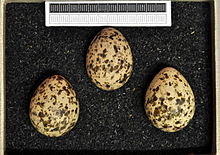
The pratincoles or greywaders are a subfamily (Glareolinae) of birds which together with the coursers make up the family Glareolidae. They have short legs, very long pointed wings and long forked tails.

Glareolidae is a family of birds in the wader suborder Lari. It contains two distinct groups, the pratincoles and the coursers. The atypical Egyptian plover, traditionally placed in this family, is now known to be only distantly related.

The wood sandpiper is a small wader. This Eurasian species is the smallest of the shanks, which are mid-sized long-legged waders of the family Scolopacidae. The genus name Tringa is the Neo-Latin name given to the green sandpiper by Aldrovandus in 1599 based on Ancient Greek trungas, a thrush-sized, white-rumped, tail-bobbing wading bird mentioned by Aristotle. The specific glareola is from Latin glarea, " gravel".

The collared pratincole, also known as the common pratincole or red-winged pratincole, is a wader in the pratincole family, Glareolidae. As with other pratincoles, it is native to the Old World.

The oriental pratincole, also known as the grasshopper-bird or swallow-plover, is a wader in the pratincole family, Glareolidae.

The cream-colored courser is a wader in the pratincole and courser family, Glareolidae. Both parts of the scientific name derive from Latin cursor, "runner", from currere, "to run" which describes their usual habit as they hunt their insect prey on the ground in dry open semi-desert regions of the Middle East and northern Africa.

The spur-winged lapwing or spur-winged plover is a lapwing species, one of a group of largish waders in the family Charadriidae.

The small pratincole, little pratincole, or small Indian pratincole is a small wader in the pratincole family, Glareolidae.

The African wattled lapwing, also known as the Senegal wattled plover or simply wattled lapwing, is a large lapwing, a group of largish waders in the family Charadriidae. It is a resident breeder in most of sub-Saharan Africa outside the rainforests, although it has seasonal movements.

The rock pratincole is a species of bird in the family Glareolidae.

The Australian pratincole is a species of bird in the family Glareolidae. It breeds in Australia's interior; it winters to northern and eastern parts of the continent, Indonesia and New Guinea. It is a medium-sized nomadic shorebird which is commonly found in arid inland Australia. It breeds predominantly from south-western Queensland to northern Victoria and through central Australia to the Kimberley region in Western Australia. The Australian population is estimated at 60,000 individuals. They are a migratory species that generally move to the southern parts of their distribution range to breed during spring and summer. During winter they migrate to northern Australia, New Guinea, Java, Sulawesi and southern Borneo to over-winter. Although they are common, their occurrence is unpredictable and varies in location.














